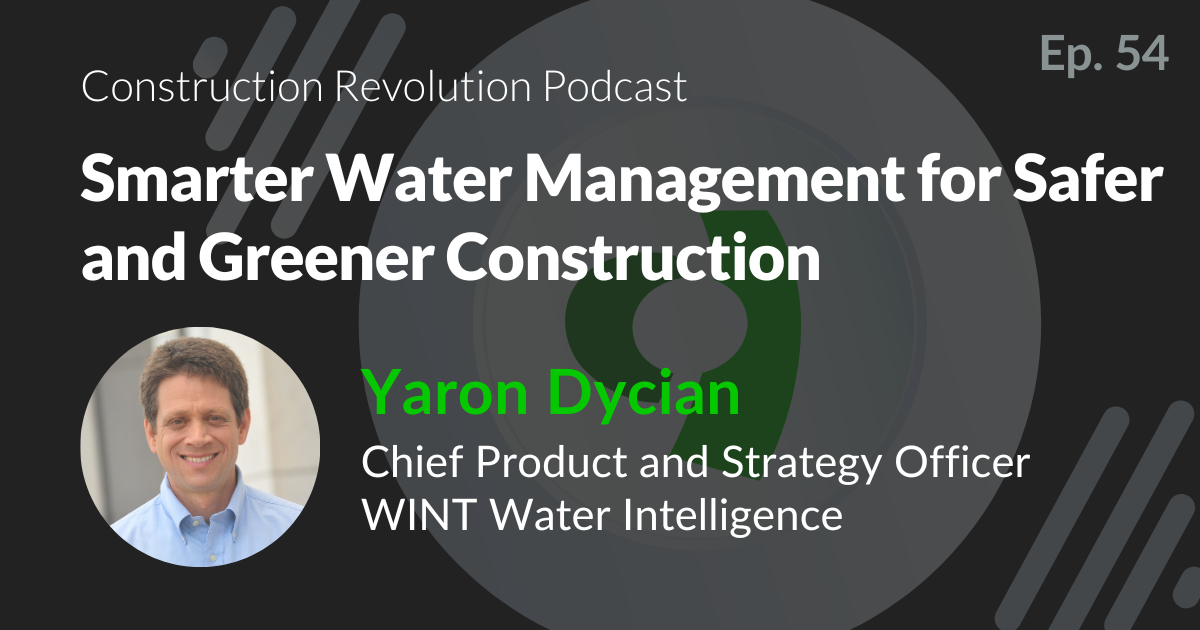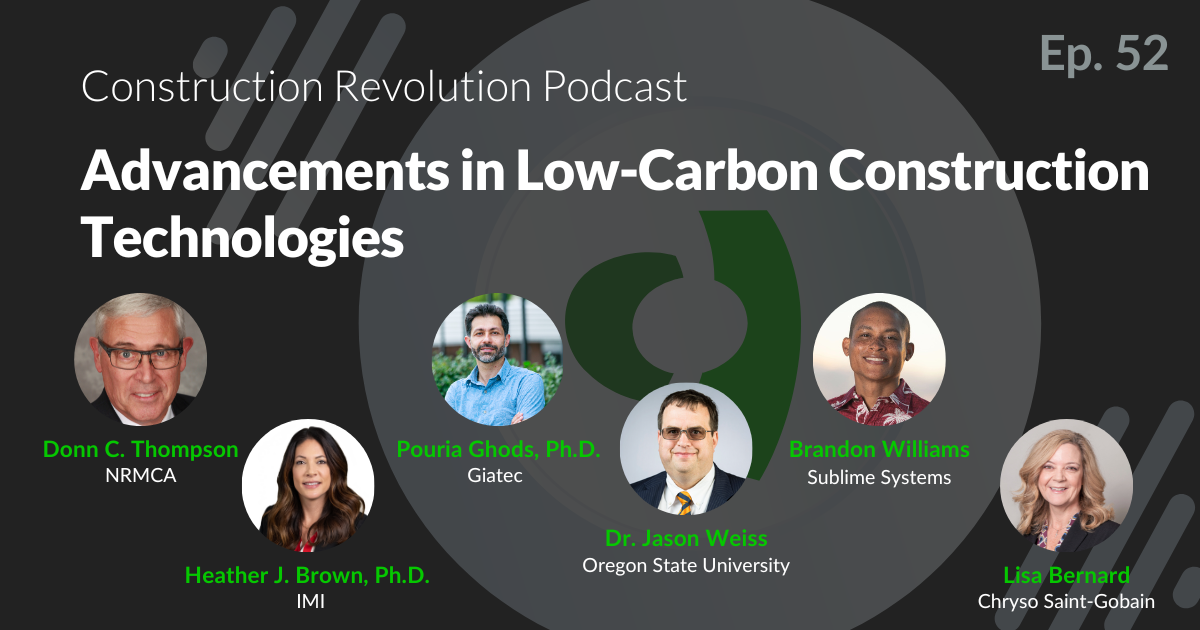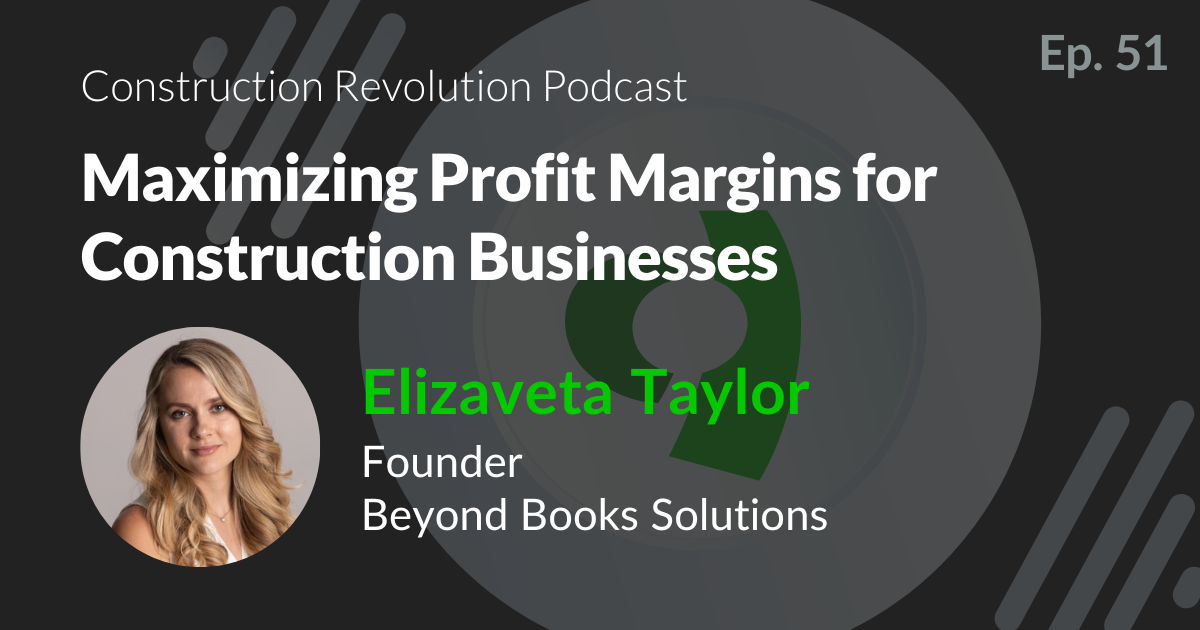
Episode 42 |
May 16, 2024
Digitizing Construction Sites
In This Episode
In this episode of The Construction Revolution Podcast, we are joined by Aviv Leibovici, CPO & Co-Founder of Buildots. Aviv brings a mix of technological innovation, and visionary entrepreneurship to the construction industry.
Join host Steven Rossi as he delves into Aviv's remarkable journey from an esteemed educational background in computer science to the groundbreaking establishment of Buildots. Discover how Aviv and his team are revolutionizing the construction world with AI-driven technology that transforms construction sites into digitized environments for real-time tracking and decision-making. This episode offers a deep dive into how Buildots' platform is influencing major construction projects worldwide, enhancing efficiency, and redefining traditional construction methodologies.
Don't miss this episode to learn about the fusion of AI, computer vision, and construction management through the lens of Aviv Leibovici's unique experience and vision. This conversation is a treasure trove of insights for anyone fascinated by the intersection of technology and construction, and it underscores why Aviv's leadership at Buildots is pivotal for the future of the construction industry.
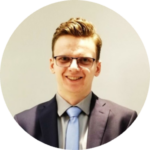
Host
Steven Rossi-Zalmons
Marketing & Events Lead, Giatec Scientific Inc.

Guest
Aviv Leibovici
CPO & Co-Founder, Buildots
Podcast Transcript
Steven Rossi:
Hello there and welcome to the Construction Revolution Podcast. My name is Steven Rossi and here on the show we explore the latest trends, technologies, people, and organizations that are revolutionizing or disrupting the construction industry and are changing what the industry will look like tomorrow. Today on the show I’m speaking with Aviv Leibovici, CPO and Co-Founder at Buildots. Aviv, along with his co-founders saw the immense potential for digital transformation within the construction industry.
This realization led to the founding of Buildots, a company at the forefront of construction technology. Join us as we dive into Aviv’s journey from his academic roots in computer science to co-founding Buildots. We’ll explore how Buildots revolutionary platform uses AI and hardhat mounted 360 degree cameras to transform construction sites into digitized environments, enabling real-time tracking and efficient decision-making across the globe. Aviv will share insights into the company’s rapid growth, its impact on the construction industry and what the future holds for digital innovation and construction projects. Hello Aviv, thanks for joining the Construction Revolution Podcast today. How are you doing?
Aviv Leibovici:
I’m good, Steven. Thank you for having me.
Steven Rossi:
Absolutely. I’m excited to get to know a bit more about you and about Buildots as well. So just to kick us off, can you tell me the story of how you and your co-founder started Buildots?
Aviv Leibovici:
We, as the three of us, we don’t come from construction, we come from a more data and systems background. And we had it in our minds that we wanted to do something that will affect the real world, so to speak. Came across construction by basically people giving advice that it’s an interesting industry to look into and started just visiting construction projects and construction people and from CEOs to companies when we could get to them all the way to walking around site with foremans, with supers, with whoever. And very quickly from that experience came to realize that it’s all situation in which information and credible information is really, really, really lacking and set our sights on that.
Steven Rossi:
Yeah, absolutely. The construction industry is definitely lagging behind in comparison to most other industries in that respect. So based on your experiences on job sites, can you explain what you set out to develop and what Buildots is and how it works?
Aviv Leibovici:
Sure. So I guess the best way to explain this, it all started from me sitting in on this sort of weekly subcontractor meeting on a few of the projects and you see how there’s a discussion going on and I did finish that. You did not finish that. I’m going there. No, you can’t go there, ’cause he’s blocking me. No, oh, who says what? And for us that was, it seemed a challenge and we quickly realized that the only way that you could have really credible and good information about the status of a construction project is if it’s collected automatically. Once we went down that route and we’re like, okay, how automatically it has to be from a video capture and AI, and that’s what we started building. We started just understanding how to build the technology that you’ll capture a video of a construction site and you’ll know what’s going on. For us, reading about the industry and understanding that BIM is, I guess you could say back then a new thing, but I think it has been a new thing for 20 or 30 years.
So it depends on how you look at it, but we understood it from a technological standpoint and from a construction and design standpoint would be best to rely on that. So we went down that road and just started building this stack that was, the original goal was for it to know what’s going on. Eventually what it does is you take a video capture of a construction site, it compares that video, analyzes it against the design and the schedule, and therefore knows now what’s meant to be built, what has been built and how does that align with the schedule and eventually produces this dashboard system that shows what is done, what is not done, what is ahead, what is delayed, where are there inefficiencies, where is there something missing, et cetera, et cetera.
Steven Rossi:
Great. Yeah, that’s awesome. And so then from a, I guess who would be sort of the user? Is the GC the user or the owner or who’s sort of your main customer and then also your end user as well?
Aviv Leibovici:
Yeah, so both are the GC. We do have cases where we’ve sold it to owners who basically bought it in a sense of we understand that this can really help the GC. So they basically signed the check and then introduced us to the GC to say, hey guys, look, this is a tool for you really more than it is for us as the owner. So the vast majority of our clients are GCs, some are owners, but of those, most barely use it themselves and mostly have given it to GCs, there are a few that start seeing this as a, hey, you know what? Maybe it’s a good way for me to also know what’s going on and to have more educated discussions with the GC.
Steven Rossi:
Awesome. And then in terms of the video and uploading and stuff, would you just walk around with your phone or is there some special software or something or a camera that you need to have it work?
Aviv Leibovici:
You walk around, yeah, you walk around with a 360 degree camera, just standard camera. Most of our customers use GoPros. You don’t actually have to do anything special. You don’t need an app in that sense because you don’t need to tell this software where you are or you don’t need to walk any specific path or anything. So you just walk around and eventually you upload that capture. Most cases that’s just done through the web app because it’s the most convenient way.
Steven Rossi:
Can you share an example of a project where build-outs had a significant impact?
Aviv Leibovici:
So recently we started this new thing in which we’re helping projects track more cost-leading indicators and more what we call production metrics. One good example is pace of work. So we do this thing where you can see in the product that if the current pace of, let’s say, well in the actual example, drywall, continues as is, when will that activity finish on the entire project? So not just saying if you’re on schedule, because a schedule is a tricky thing that you can build to show many things and you can consider yourself on time, but how realistic is it that you remain so is the question. And on this particular project, this was a, I think 400 units roughly residential scheme and very, very early on, I think when they were framing something like the third floor, it already was very clear that the pace of work in which that framing is happening, you project that forward that’s going to finish 120 working days late.
So that’s something like six months, roughly. And for them, they could then action that very quickly, sit with that subcontractor and say, hey, look, this is the problem we have. Let’s tackle it now because it’s small and not later. And they worked a few angles. They had the first what we call mitigation plan. It didn’t really work. The second one, eventually they brought in a second crew and together they just very quickly saw their own pace. And eventually the whole point of this story is that they caught this one with a still very small problem, and the alternative is to catch that when the delay is already significant and you’re seeing it that it’s happened and then it’s not just, oh, I can get another quick crew or something, then it’s a far more complex thing to solve. So that project too soon to say completely because it’s not done, but it was on track at least for framing at the time, it finished six months late and that changed to not be on track to being late at all.
Steven Rossi:
Yeah, that’s great. That’s a great example. So then from, I guess when you pitch the project, the product to GCs, what’s sort of the typical response and do you have any reluctancies in adopting the technology?
Aviv Leibovici:
I wouldn’t say reluctancies, no. I think the beautiful thing that I found out about construction since I started engaging with this industry is everyone knows that they need help and they’re very comfortable in that because it’s not about them not doing their job, right? It’s about the insane task that is to manage such a construction project with the tools that do exist. So because everyone knows that what is expected of them is just really unbelievable in many ways, then the openness to say, hey, something new could very well help me is great. And we’ve seen that discussions go very well.
Once you show people that it could help them know what’s going on to more detail or help them catch problems early and save a lot of headache and pain, never mind delays and costs, but for the individuals down the line or help them engage with their subcontractors or owner in a better way that isn’t, call it friction-full way, but rather as a way of saying, hey, look, this is where we are. This is what this thing says, it’s not me. We can even see the images behind it. So it’s clear to both of us that’s what’s going on. Let’s now together understand how to tackle it and the best feedback that I’ve received from what customers are with and say that just the amount of arguments and call it voice average decibel levels have been reduced because of this. So I think that’s what gets people to engage.
However, that’s not to say that then adoption is, oh, so easy, no reluctance maybe, but to start incorporating something new into your process, no matter who you are, no matter what industry you are, is a very complex process. I think we’re introducing information into something that never had it before. So this is not replacing, oh, you used to have this, now you have it here. This is suddenly you have access to things you did not in the past. So that requires a level of adopting a change and that’s no easy thing. I think with time we learned how to better enable that to customers, how to be able to train them, how to better have those discussions with them.
Steven Rossi:
Yeah, absolutely. I guess from a GC point of view, it makes sense not only from a business case, but also for that PM, it’s going to make their lives a lot easier. I guess I’m wondering then maybe from a subcontractor point of view, do you ever get pushed back or hesitancy because essentially you’re going to be calling out when they’re late and have the proof to back it up?
Aviv Leibovici:
That’s a really good question, ’cause I thought that that’s what will happen. The very first project we ever did was here in London, and I used to visit that project once a week just to get a feel for it, to understand what’s going on, to understand how they can or cannot use it and all that. And very early on, this system flagged two huge errors by the steel frame contractor. Basically things that down the line would’ve cost hundreds of thousands to fix. So I’m like, okay, this called them out, surely they don’t like me anymore. Then I got to site and these guys came up to me and said, we want to introduce you to other GCs we’re working with, and I was shocked. I’m like, why? Their answer was, look, sometimes we make mistakes, sometimes others do.
A, if we make a mistake, eventually we’ll have to correct it, and correcting it now for us is far easier than correcting it in six months time. B, sometimes others make mistakes that then affects us and our productivity. So the existence of this thing here showing what’s going on is helping us too. It’s just making everything better for everyone, and that was very cool, and they did in fact take us to introduce us to another GC that they’re working with on another project, and the whole thing was very eye-opening. I think people many times understand that this is not a zero-sum game, but the process can just be better and then better for everyone.
Steven Rossi:
Yeah, for sure. That’s great. That’s great to hear that everyone is so open, is so open to receiving it. So then I guess in terms of next steps and new features that Buildots is working on, how do you envision Buildots evolving over the next few years?
Aviv Leibovici:
So what we’re focusing on right now is risk identification and mitigation. What we’re talking about is identifying risks early. I basically call it identifying a fire when you can still stomp on it and it hasn’t burned down your house yet. And then how can we provide tools that even help tracking how you’re trying to mitigate it? So that’s our current focus in that we do things like pace of work, looking at when the sequence of activity breaks and what can be done about that, looking at return visits and when the last 5% of work is incomplete or done incorrectly and such.
The next bit for us is to say, okay, how can all this data now be used to even at the, call it the wider level, avoid these situations? So can it be used to better plan? Can it be used to understand that which teams, that’s both the GC team and the subcontractors involved and whoever are best and most appropriate for which types of projects and more and more around those worlds of using it outside of just the individual project realm, let’s say. The other thing is just looking at more phases of construction. So we don’t do groundworks, we don’t do externals, landscaping, whatever as of the sort, and we’re looking to introduce that as well.
Steven Rossi:
Awesome. That’s really exciting. And I’m wondering from I guess more technical point of view to build, obviously to build something like this you need a lot of data and to train the algorithms and everything that’s going to support this. How did you go about getting that and where was that a big challenge for you and does it continue to be?
Aviv Leibovici:
So luckily enough, it was not too difficult to get access to construction sites to test. So the first few were really from friends in industry, and then we started working with one of the big GCs in Israel and they allowed us to just test on their projects and then GCs here in the UK and they allowed us to test on their projects and started gathering data there and doing a lot of manual work to tag that data. The first, very early on in this company, before it was really a company to be honest, I spent something like a week continuously marking corners and images, telling the system what is a corner of two walls.
I started, imagine I would walk around home after work and imagine corners being marked, I’d flip out. So we do that and then we started deploying, and originally a lot of it was still, the way the system works today is that most things it knows to analyze automatically. When it doesn’t for whatever reason, it could be really one of two reasons. Either the particular photo, particular image has, I don’t know, something got it confused or it’s a type of activity that it has never seen before.
One funny example, we did this facility of offices and lab area of this car company, and suddenly one of the activities was installation of a car hoist, so that, the system has never seen before. It was like, who knows? So every time that that happens, that is routed to human beings to answer that question instead of the AI. And that’s how the AI also learns. On the first few projects, it was very heavy on that, so there was a lot of manual work introduced into that, but it was seamless caught in the background. The product worked just as well. It just cost us loads to run it and with time the data was gathered to also make it a bit more sustainable.
Steven Rossi:
Right. Yeah, that makes sense. As you’re coming up with new issues, you’re also teaching, so you don’t have those issues come up again, nice. So you personally have sort of a very unique background for someone working in construction, and you sort of touched on this a little bit in your story, but I’m wondering what made you want to work in construction and how have you found the industry coming from outside?
Aviv Leibovici:
Yeah, so going back to that story, a friend of a friend sat down, heard that we were looking to do something, and they were working for a big GC at the time and sat down with us and said, you guys want to do something that has an effect? Let me tell you, the construction industry could use it, doesn’t have many people who are interested in doing it for the construction industry and is extremely open to adopting these sort of things. Well, now extremely open. Nobody is extremely open to new things and to change, but relatively so.
And we started just like that. And since then I think I’ve come to learn how much he was right and more so. I never expected to be so, call it even emotionally involved in succeeding to do new things in this industry, but it kind of grabs you, I think in many ways, grabs you because of the immense challenge. It grabs you because of the unbelievable things that, I just visited a 1 million square foot project of customers of ours, and you stand there and you’re like, how the hell did this team build this in the context and conditions that they were given? It’s unbelievable. So the people grab you and have a lot of good trends now in London that are former customers or current customers or whatever. They just, that’s how I came to contact with them. So I spent a lot of my time on and off work with construction people and it’s just, it’s the most fascinating industry, I think, piece that I’ve come across.
Steven Rossi:
Yeah, yeah, that’s great. Yeah, no, definitely the construction industry is, I mean, I think once you get into it’s bigger and more elaborate than you would ever imagine then…
Aviv Leibovici:
Yeah, definitely.
Steven Rossi:
When you have to think about it.
Aviv Leibovici:
I think people, when you remain in construction, when you stay the operational construction person for a while, whether you’re a super or PM, you move on to head office, whatever you do, but it’s such an unbelievably intense environment. I think the only people who stay are the people who really have passion to build in very real ways, and that way you get to be in a position where you’re constantly in contact with people who are passionate about what they do. That’s really a very cool thing.
Steven Rossi:
Yeah, yeah, absolutely. Yeah, I think, yeah, it’s definitely intense and high pressure. So the people who stay for the long run are definitely the ones who are the most passionate, which is great. So going sort of more broadly, what emerging technologies have you seen and also looked to incorporate in Buildots that you see as game changers for the construction industry in these coming years?
Aviv Leibovici:
Well, I have to say AI, let’s start with that, ’cause my product is built on that, but I think it’s not just that. I do think that we will see with time how the combination, let’s call it, of AI and of tools that Buildots and others like it, that generate all sorts of new data and information about the construction process as a whole, planning, delivery, everything, will suddenly enable incorporating other technologies in a more call it efficient way, whether it is offsite manufacturing, whether it is robotics, whether it is, whatever it is, but succeeding to do that in a way that is successful and not sometimes a swing and a miss, because I think there’s no world, at least not one that I can see anytime soon in which everything is built offsite or everything is built by robots or everything is built half-and-half or whatever it is.
But if you have the right information and you have the right analysis of what’s good and what’s bad and when, then suddenly you can do it when that’s the right thing. In my small example in that is a customer that they realized during a project that there was some bottleneck around some specific interface in their toilets in a hospital project, and they saw that from the data because that was clear that that’s where the bottleneck is, that everything is stopping there, and then they got that piece manufactured offsite suddenly for the rest of the project. So it’s these sort of things, and I think the combination of these things of data, of AI, of BIM that’s been around will enable the things that are, let’s call the cool things off-site, robotics, those kinds.
Steven Rossi:
Yeah, yeah, that’s definitely an interesting take, I think. But absolutely, the more data we have, the better decisions we can make and that also better integrates and allows us to leverage more technology, for sure. So as someone who’s been a co-founder of a company for your first time, I’m wondering if you would have any recommendations for new entrepreneurs and specifically in the construction industry, but also in tech in general?
Aviv Leibovici:
Well, first of all, in general, it’s not a construction industry. If you’re not committed to it, don’t do it. Let’s start with that. I mean, people think that the main thing is that it’s time-consuming. I don’t think so. Yeah, it is very time-consuming to be a founder of a company, but it’s more mentally consuming, if you will. When we just started the company for the first say, two years, I could barely go and sit and have a drink or whatever, not because I didn’t have time, it was because I’d find myself sitting there just preoccupied with work stuff and with, why are you not working right now? So it’s a wild ride and it’s a cliche, but it’s all about who you do it with. I have two very, very, very good and close, and it’s us as a team that are holding, even now, this company has 200 employees.
It’s been around for so many years, it’s still those two that are really the ones who are truly with me, in it for me. So it’s all about who you do it with and if you can do it for a purpose that you’re excited about, and I think that’s the beauty of this construction industry, and that definitely helps. In construction, I would just say that the beauty about this industry is that people are so open. It took me so long to understand that I was held back by feeling, oh, I can’t ask this, I can’t ask that of people. I can’t ask for their time, I can’t whatever, because it’s, come on, you’re being annoying. But people in the industry don’t have that.
They just tell me, oh, look, call me, if I can’t, I just won’t pick up. I’m not going to be bothered about not picking up the phone when you call. I’m not going to call you back ’cause I got a lot of things going on. You can just call me, you don’t catch me, call me again. It’s all good. We’re all trying. So if you’re starting something in construction, capitalize on that. People want to be involved in something new. They don’t have the time, but if you stay around enough until you find this moment when they do have time, then that works.
Steven Rossi:
Yeah, yeah. No, absolutely. I think that’s a great point. The construction industry is, yeah, people are crazy busy, but if you can get a moment of their time, they’re generally open to hearing you out and incorporating. So lastly then, if people want to get started with Buildots, where would they go and what does that process look like for getting started?
Aviv Leibovici:
Well, the simple answer is Buildots.com, the semi-simple answer is to email me at aviv@buildots.com. But really I would just say, look, when we start with a new customer, we always say it’s all about starting on a project and the right project. I don’t think anyone in the industry will start with something new on suddenly a dozen projects. I don’t think it makes sense. I wouldn’t want to either, because we’re trying to build something really. So it’s all about finding the right first project, there’s something on the right project, the right setting, the right project team, and when there is that opportunity, I think the reward is going to be massive. And for us, we’re very much in a weird way, uninterested in that project and in the business side of it, we’re looking to start a relationship, so we will do it together. So really it’s just about reaching out when the right opportunity is available.
Steven Rossi:
Awesome. Well, thanks so much for your time and it’s been great getting to learn more about you and about Buildots, and I’m excited to see the future of the company.
Aviv Leibovici:
Thank you, Steven. Thanks for having me.
Other Related Episodes
Episode 54 |
February 6, 2025
Smarter Water Management for Safer and Greener Construction
In this episode of The Construction Revolution Podcast, Steven Rossi sits down with Yaron Dycian, Chief Product and Strategy Officer of WINT Water Intelligence. With over 25 years of experience driving strategy and innovation at leading companies like IBM and RSA, Yaron is leading the charge in AI-powered water management solutions. Tune in as Yaron shares the story of WINT, explores the rising challenges of water damage claims, and discusses how advanced monitoring and leak mitigation technologies are shaping the future of construction. From preventing costly damages to meeting sustainability standards and lowering carbon footprints, this episode offers valuable insights into how construction companies can stay ahead in a rapidly evolving industry.
PLAY
Episode 52 |
November 14, 2024
Advancements in Low-Carbon Construction Technologies
Join us for an engaging and insightful panel discussion from 2024 Net Zero Construction Conference, hosted by Aali Alizadeh, Ph.D., Co-Founder and CTO of Giatec and Technology Chair of The Net Zero Construction Conference. This episode dives into groundbreaking advancements in low-carbon construction technologies, highlighting both the promising opportunities and the significant challenges involved in their industry adoption.
Our distinguished panel of experts features: Professor Jason Weiss from Oregon State University, Heather Brown, Ph.D., Vice President of Quality Control/Quality Assurance at Irving Materials Inc. (IMI), Donn Thompson, Senior Director of Building Innovations at the National Ready Mixed Concrete Association (NRMCA), Brandon Williams, Business Development Manager at Sublime Systems, Lisa Barnard, Sustainability & EPD Program Manager at Chryso Saint-Gobain, and Pouria Ghods, Ph.D., Co-Founder and CEO of Giatec. Together, they offer a wealth of knowledge on the latest advancements in sustainable construction, sharing how innovative materials and solutions are transforming the industry.
Don’t miss this opportunity to learn from industry leaders as they share actionable insights and strategies that can drive meaningful change in the construction landscape.
Want to dive deeper into conversations like the ones in this episode? Join us at the Net Zero Construction Conference 2025 on March 19-20 in the Virbela Metaverse! Experience two days of expert panels, innovative insights, and networking opportunities focused on low-carbon construction technologies. Learn more and get your tickets on the N0CC website!
PLAY
Episode 51 |
October 24, 2024
Maximizing Profit Margins for Construction Businesses
In this episode of The Construction Revolution Podcast, Steven Rossi sits down with Elizaveta Taylor, founder of Beyond Books Solutions. With extensive experience in construction accounting and advisory services, Elizaveta is dedicated to helping construction business owners save time, money, and increase their profits. Tune in as Elizaveta discusses the common financial challenges faced by construction companies, shares strategies for maximizing profit margins, and offers expert advice on cash flow management. From overcoming money mindset blocks to optimizing QuickBooks for construction businesses, this episode is packed with valuable insights for anyone looking to improve the financial health of their construction business.
PLAY
Want to Be a Guest Speaker, Sponsor, or Just Have a Question for Us? Fill In the Form!

